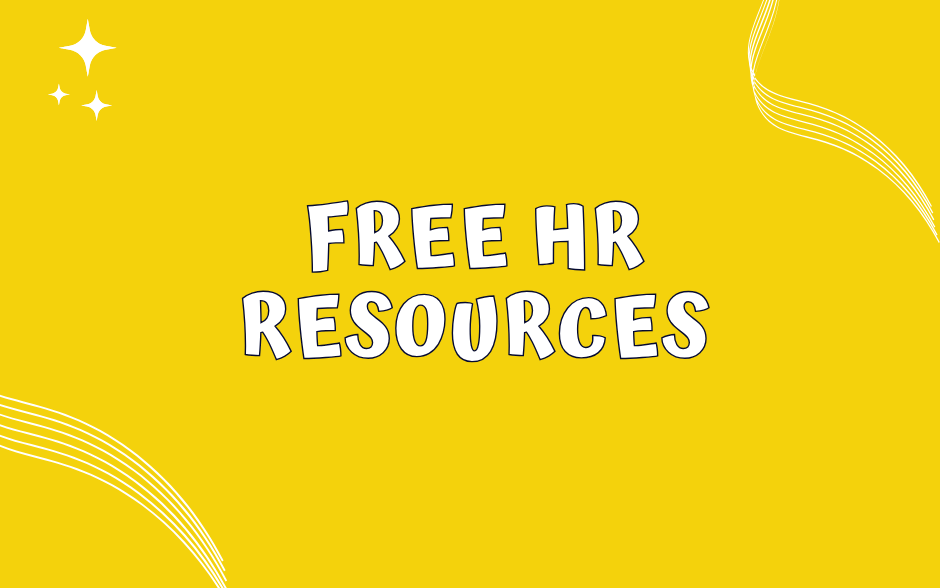How do I get my employees to work better together as a team?

Like loads of small business owners out there, you’ve probably hired different people to do different jobs. Don’t get me wrong, I bet those individuals do their jobs really well. But, are they pulling together and performing brilliantly as a team? If the answer’s no, then you’re missing a trick.
There’s truckloads 🚛 of research out there that shows what proper team working can do for businesses. One interesting study said that when two individuals of the same ability work together, their own performance increases by more than 5%.
Hold on, there’s more…
When two people of differing abilities work together, the weaker individual’s performance increases by more than a whopping 10%!
GET ME SOME OF THAT!
You might be scratching your head right now, wondering how you turn a bunch of people who work for you, into a team that performs harmoniously together – like a finely tuned orchestra. 🎻🎷
Let’s start by looking at the characteristics of a high-performing team.
A Lane4 white paper called: ‘What gives teams the edge?’ kinda suggests that high-performing teams are ones that:
- Are awesome at meeting the needs of all your stakeholders
- Often perform much better than their rivals
- Get the best outcome, in the best way, most of the time
- Harness each other’s individual talents
Does this sound like your team? If not, don’t worry, help is on the way. Read on.
MIRROR, MIRROR ON THE WALL
I was once sat in a conference and the motivational speaker on stage, asked the audience this awkward question: “How inspired are your children when they look up at you each day?” Ouch. He continued: “Do you think they want to grow up into people like you?” The audience squirmed a bit. 🙀
It’s the same at work. What you say and do – or what you don’t say and do – gives your employees important clues about your own values and expectations.
For example, if you don’t hold employees accountable when they mess up, it sends a really powerful message to the rest of your team. So, if Slapdash Simon is always cutting corners – but you turn a blind eye – it tells your team that poor quality is tolerated. This can then cause animosity amongst Reliable Rachel and Meticulous Martin who always strive to do a thorough job for your customers.
Equally, if you’re the type of leader who fesses up and takes personal accountability for the mistakes you’ve made, it’s more likely your employees will do the same.
IS EVERYBODY SINGING FROM THE SAME HYMN SHEET?
Okay, it’s a cliché of a question, but hear me out.
Each of your employees will no doubt have targets or objectives of their own. But, are they being fired up to achieve a common goal? Do they appreciate that there’s a relationship between what they do, how they do it, and why they do it? This is super important for motivation and will help them to realise how they fit into your bigger plans.
For example, imagine you had an ambition to achieve the quickest turnaround times for printing in the north of England. This goal should permeate through everybody’s job. So, the person who handles the inbound email orders knows why it’s so important they don’t faff about.
WARTS AND ALL
If you were on a quiz show – think All Star Mr & Mrs– would you be able to correctly answer questions about your employees?
When you know more about each other, barriers start to come down, and that’s when you all start to bring your entire selves to work.
Here’s a great ‘get to know you’ exercise you can do with your team. I use it loads with my clients because it really does work and it’s not too cringey to do.
Before a team meeting, everybody has to complete the five statements below:
👇🏼
- My strengths are…
- My weaknesses are…
- Please do…
- Please don’t…
- How I communicate best…
Then, when you’re together, chat about your answers and decide what you want to do, to satisfy your employee’s preferences.
YOU MIGHT BE WISE, BUT THERE’S MORE TO LEARN
Great teams never, ever believe they’re the finished article. They appreciate that the world is changing all the time – and despite their years of experience – they could always learn more.
Dr Carol S. Dweck – American psychologist and author of ‘Mindset’ – talks about the ways that teams and individuals should move from a fixed mindset to a growth mindset.
A team with a fixed mindset might say: “We’ve never been able to deliver things that quickly, so don’t promise the customer we can do it by Monday!”Whereas a team with a growth mindset might say: “If customers need our products more quickly, what can we learn to do differently, to speed up the delivery cycle?”
LOOK BACK. IN ANGER IF YOU LIKE
Amazing teams stop ✋🏼 to reflect on past situations together, to see what they can learn. It’s a great way to share feedback and help each other to get better as a team. Plus, it gives you a fabulous excuse to celebrate successes. 🎉
According to the Lane4 report I mentioned earlier, teams that take time to debrief outperform those who don’t, by a massive 20-25%!
There’s lots of clever techniques you can use to hold a debrief. Apparently, NHS England use the AAR process (After Action Review) where staff members – regardless of what position they hold – are encouraged to actively contribute, and answer questions like:
- What was expected to happen?
- What actually occurred?
- Was there a difference?
- What can be learned or identified?
ALL IS FORGIVEN. OR IS IT?
You’ve heard the expression ask for forgiveness, not for permission?You should use it more. This statement can be really empowering for an individual or team.
Project Aristotle was a study by Google into what makes an effective team. After working with 180 teams over five years – the results showed that ‘psychological safety’ was the number one thing that really mattered when it came to awesome teamwork. In other words, making sure team members felt able to take risks, make mistakes, and be vulnerable in front of each other.
Fear is a toxic thing to have in a workplace. It turns folk into robots, strangles creativity, and stops employees thinking for themselves. 😨 Whereas an inclusive environment – where employees can put forward ideas, make decisions freely, try new things, and own up to mistakes – paves the way for innovation, engenders learning, and fosters effective team working.






